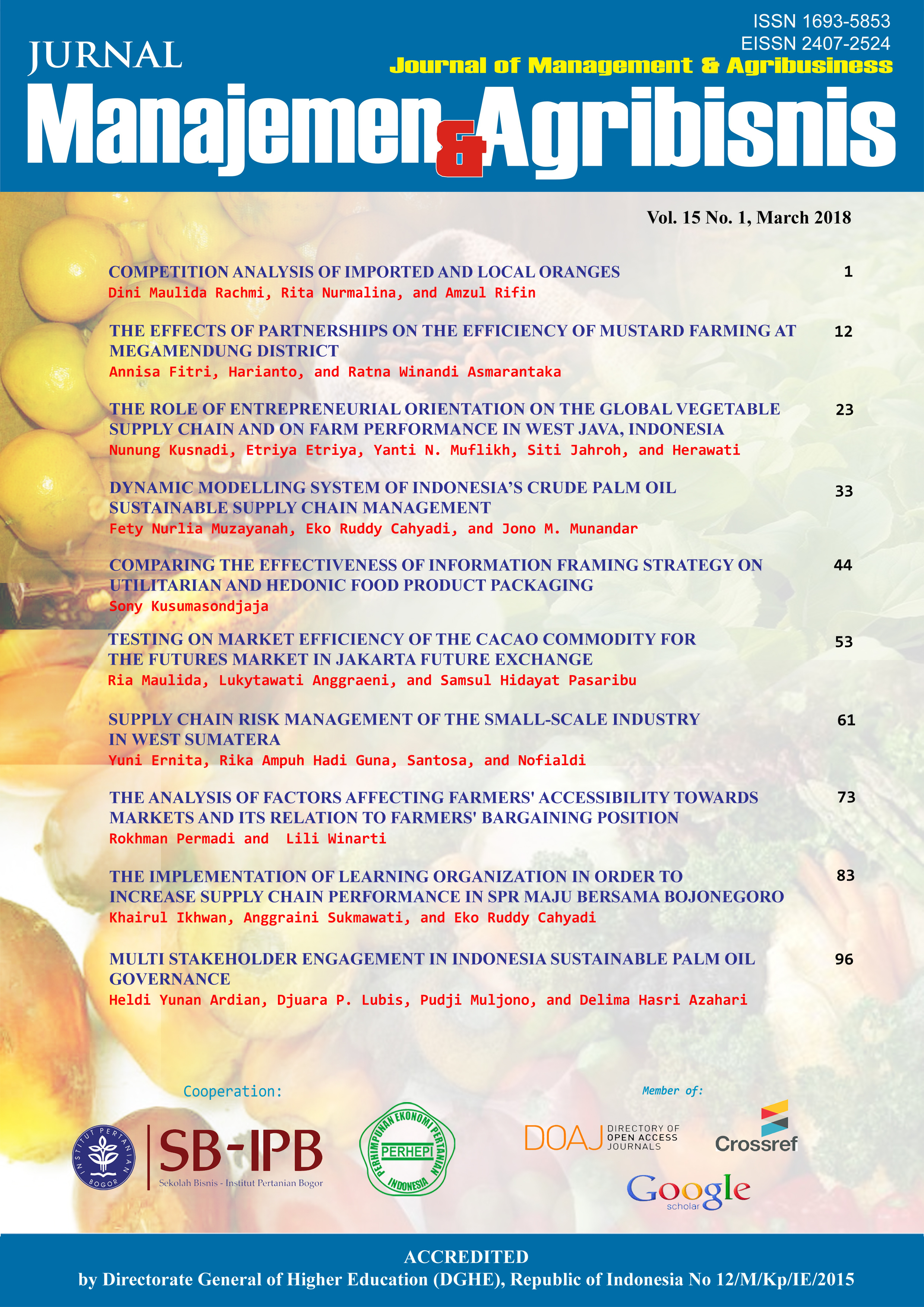Comparing the Effectiveness of Information Framing Strategy on Utilitarian and Hedonic Food Product Packaging
Abstract
The increasing adoption of framing strategy among food marketers and advertisers generates inquiries about the effectiveness of the strategy. Product messages with different framing strategy are expected to stimulate different consumer responses. This research investigates the difference of consumer attitude and purchase intention towards the framed product when consumers are exposed to food labels with different types of food product (hedonic vs utilitarian) using different framing strategy (positive vs negative). A lab experimental design was prepared involving 160 participants. Chocolate was examined to represent hedonic product while packaged milk was used as utilitarian product. Data were analyzed using ANOVA and multiple linear regression. Findings suggested that the effectiveness of framing strategy was moderated by product type. Positive framing was found to be more effective for hedonic food products, while for utilitarian food product, it was more favorable to adopt negative framing.
Authors
KusumasondjajaS. (2018). Comparing the Effectiveness of Information Framing Strategy on Utilitarian and Hedonic Food Product Packaging. Jurnal Manajemen Dan Agribisnis, 15(1), 44. https://doi.org/10.17358/jma.15.1.44
Authors who publish with this journal agree to the following terms:
- Authors retain copyright and grant the journal right of first publication with the work simultaneously licensed under a Creative Commons Attribution License that allows others to share the work with an acknowledgement of the work's authorship and initial publication in this journal.
- Authors are able to enter into separate, additional contractual arrangements for the non-exclusive distribution of the journal's published version of the work (e.g., post it to an institutional repository or publish it in a book), with an acknowledgement of its initial publication in this journal.
- Authors are permitted and encouraged to post their work online (e.g., in institutional repositories or on their website) prior to and during the submission process, as it can lead to productive exchanges, as well as earlier and greater citation of published work (See The Effect of Open Access).

